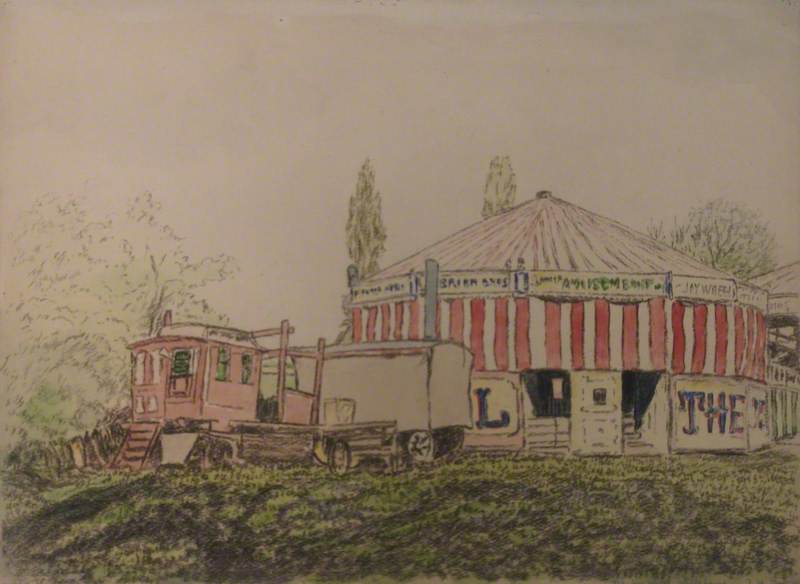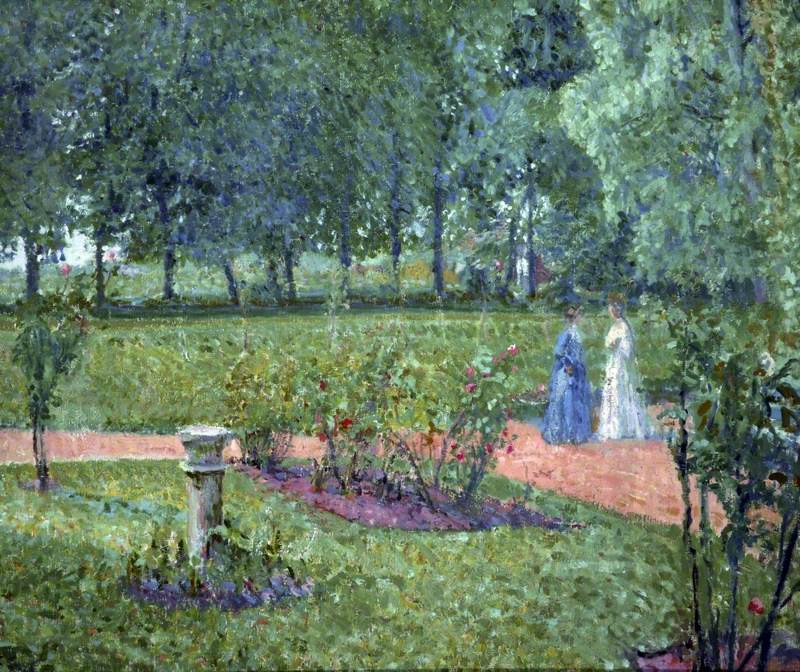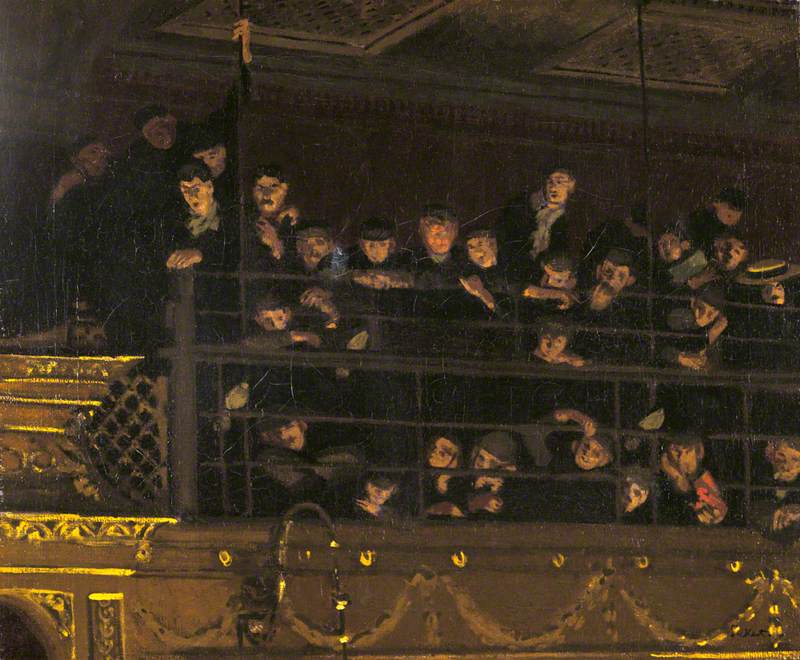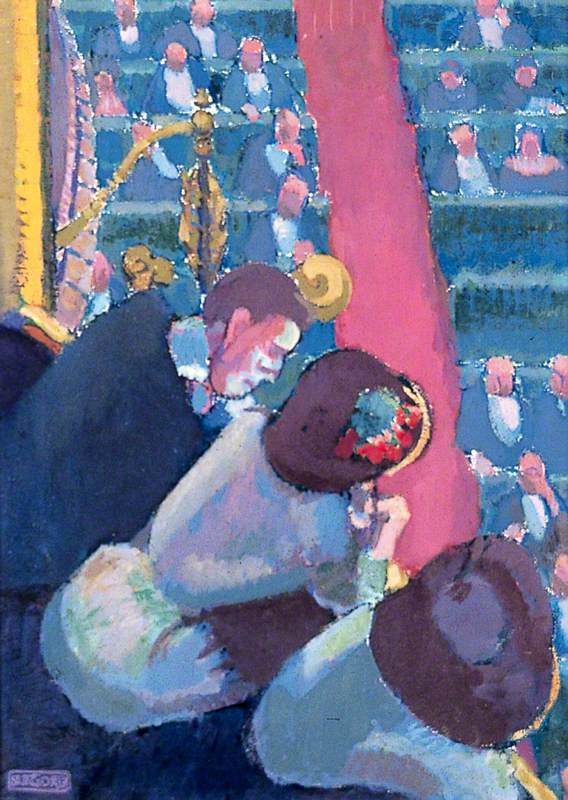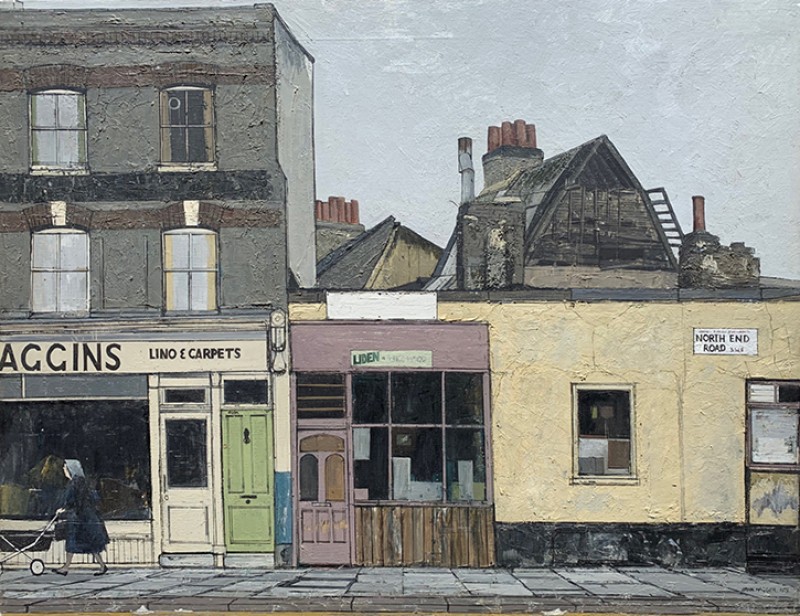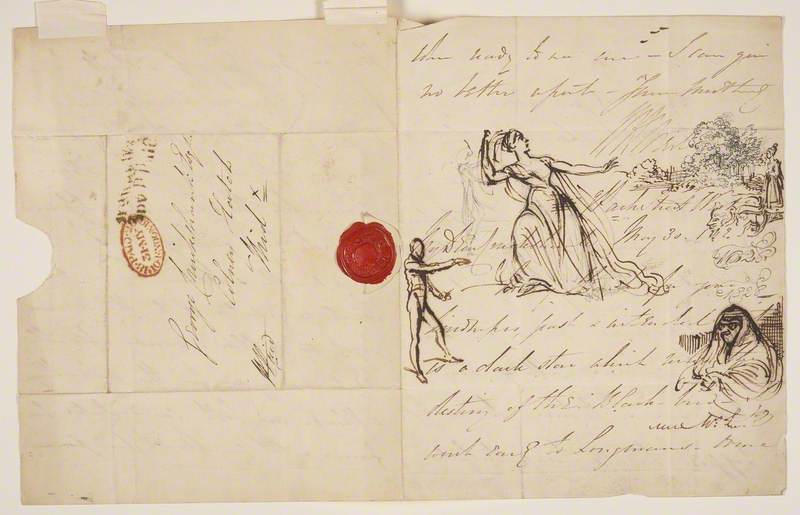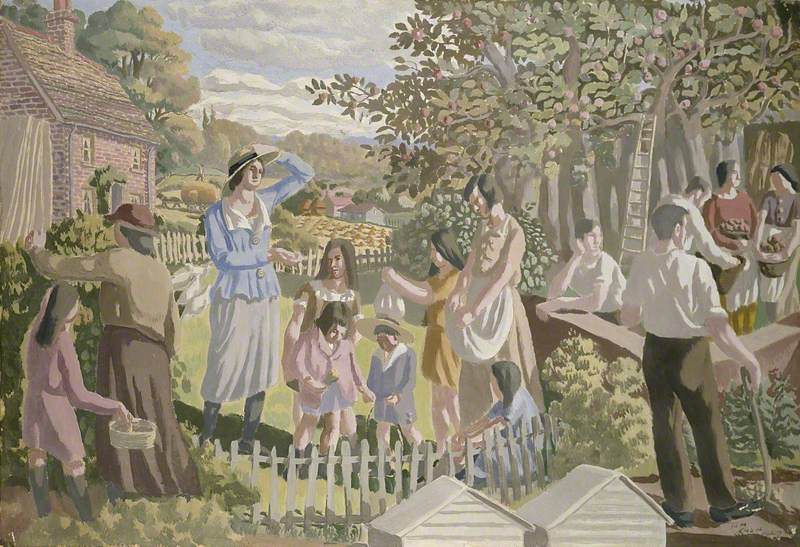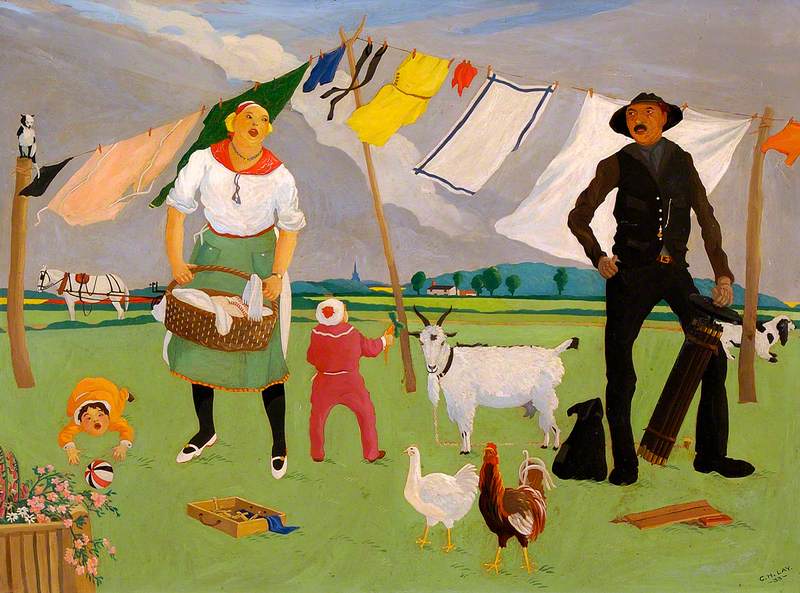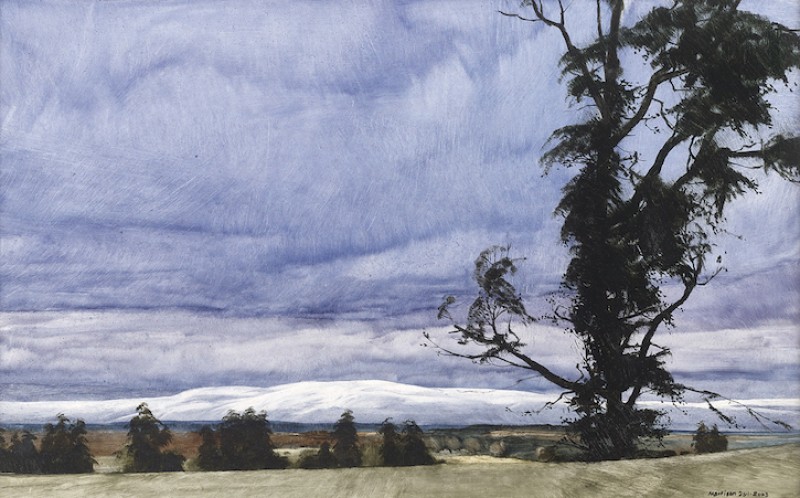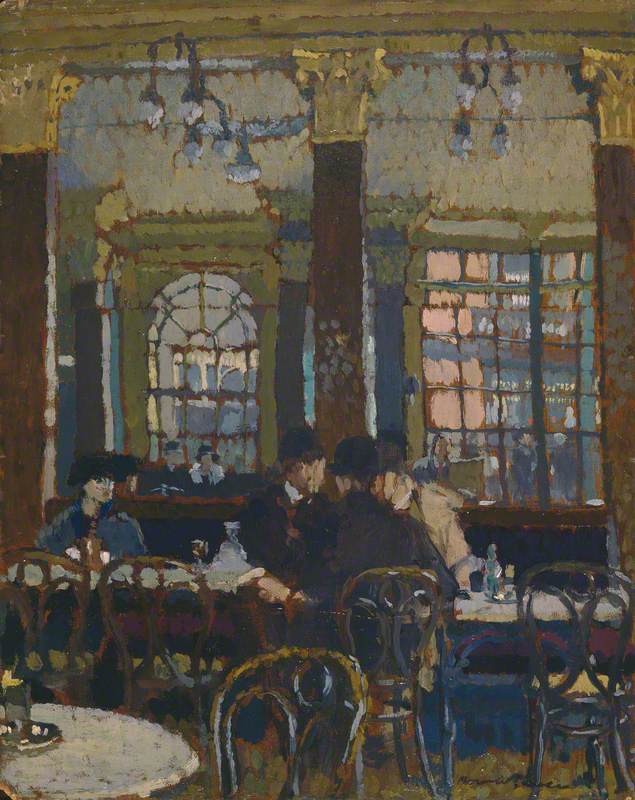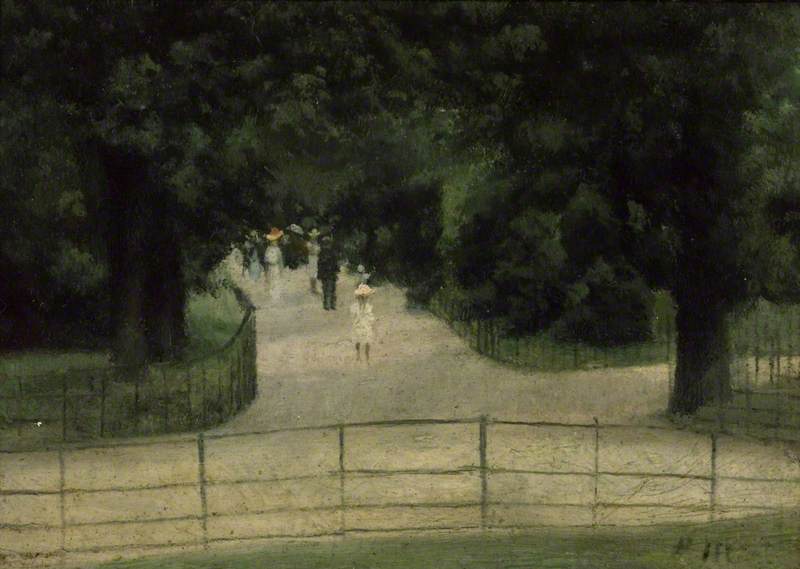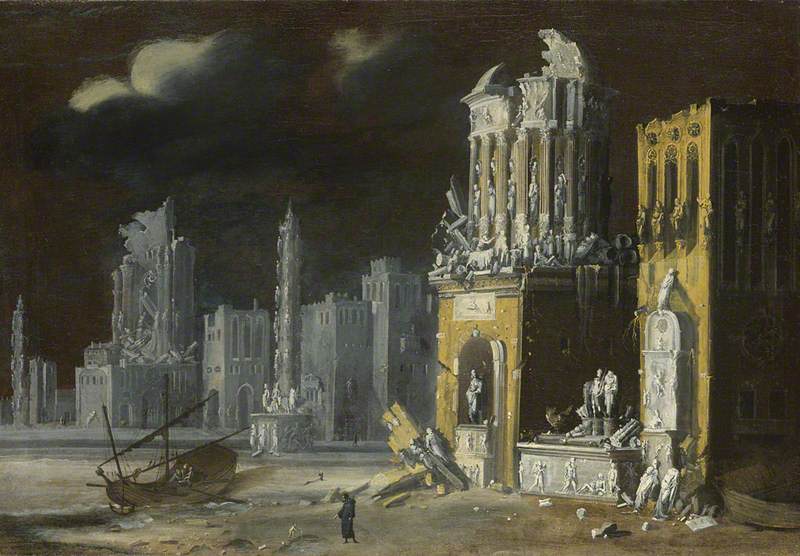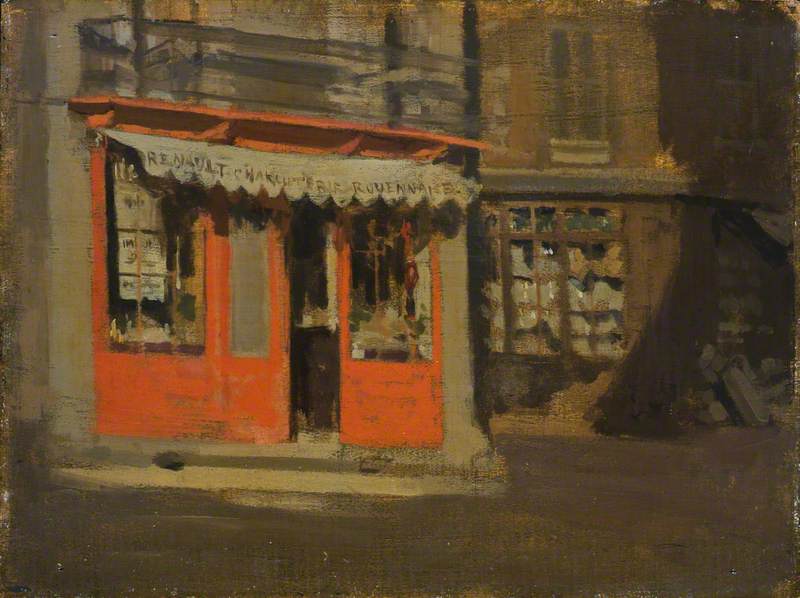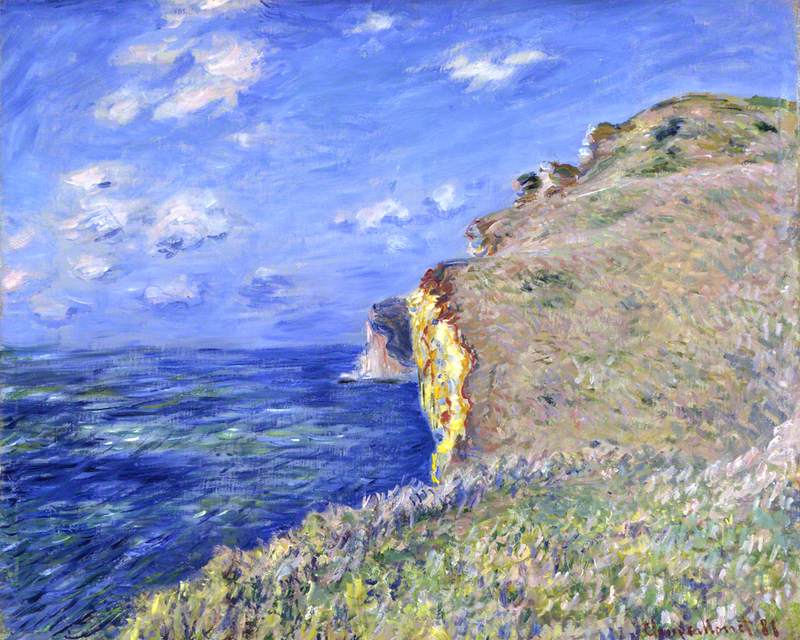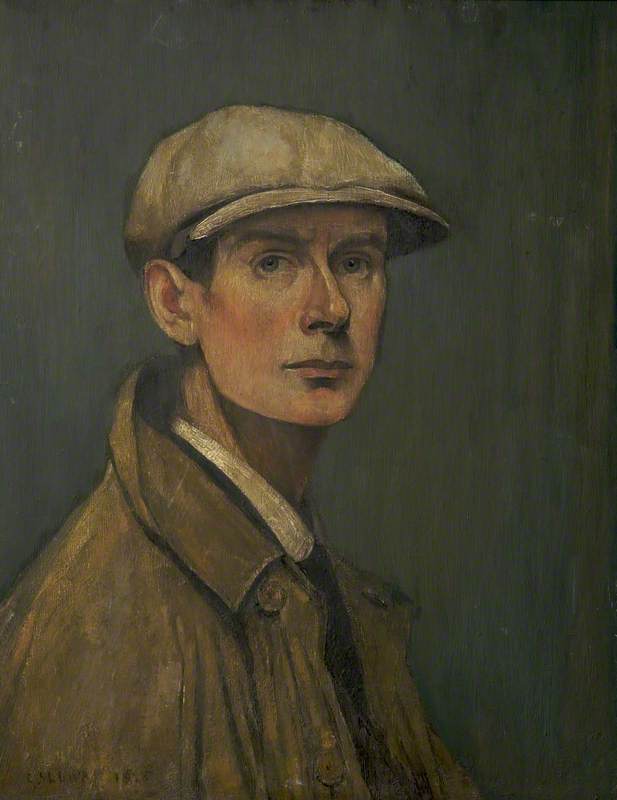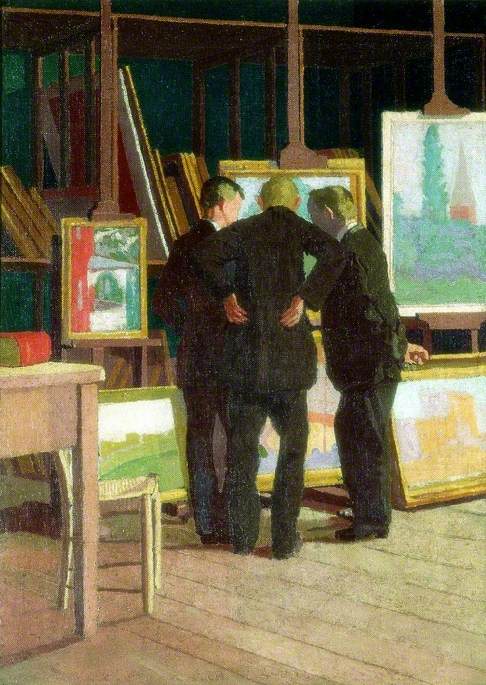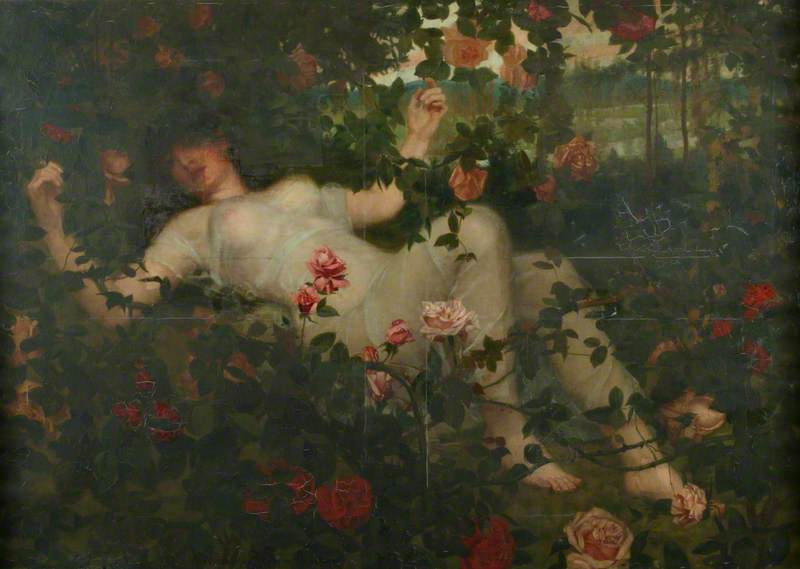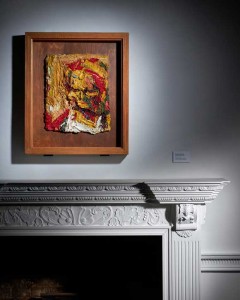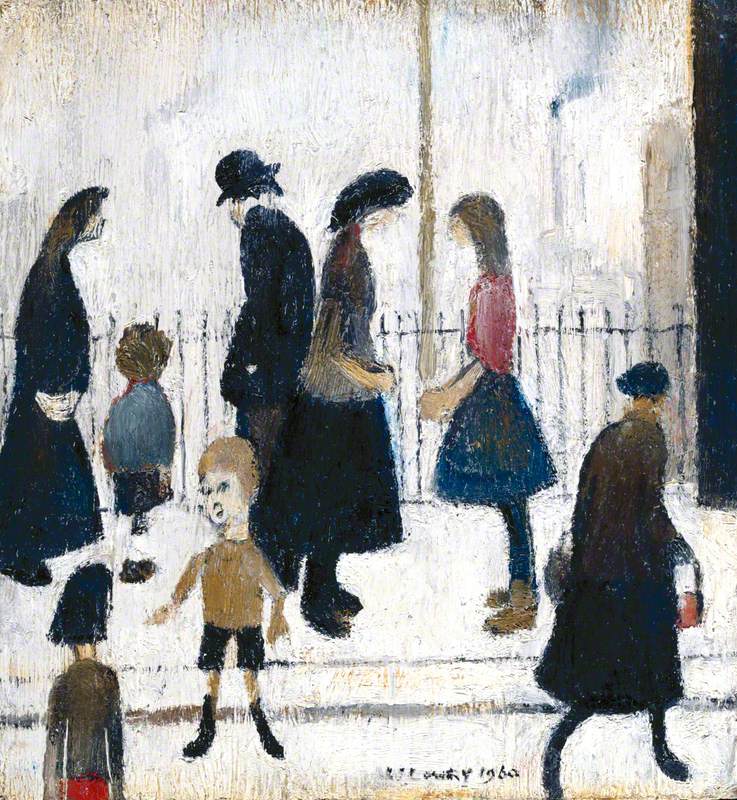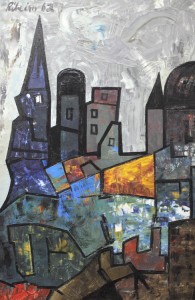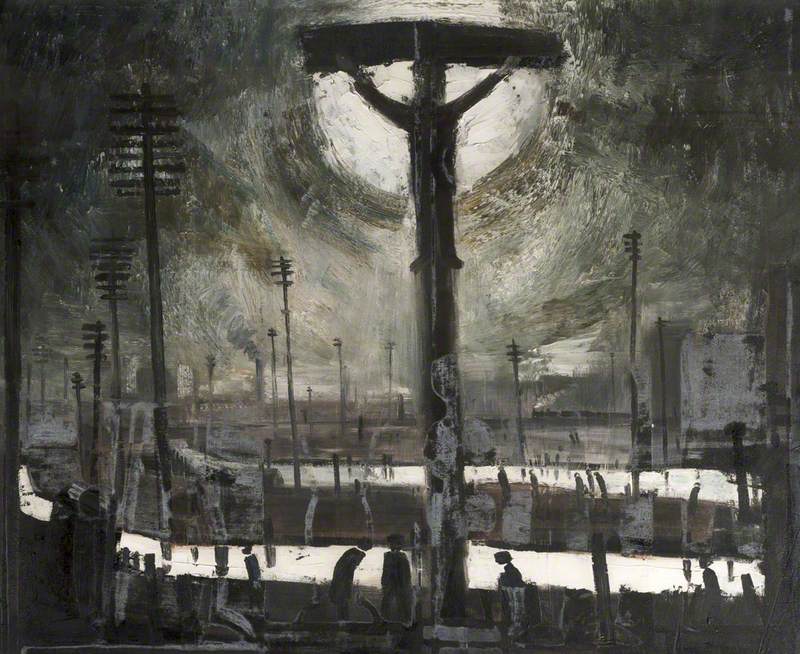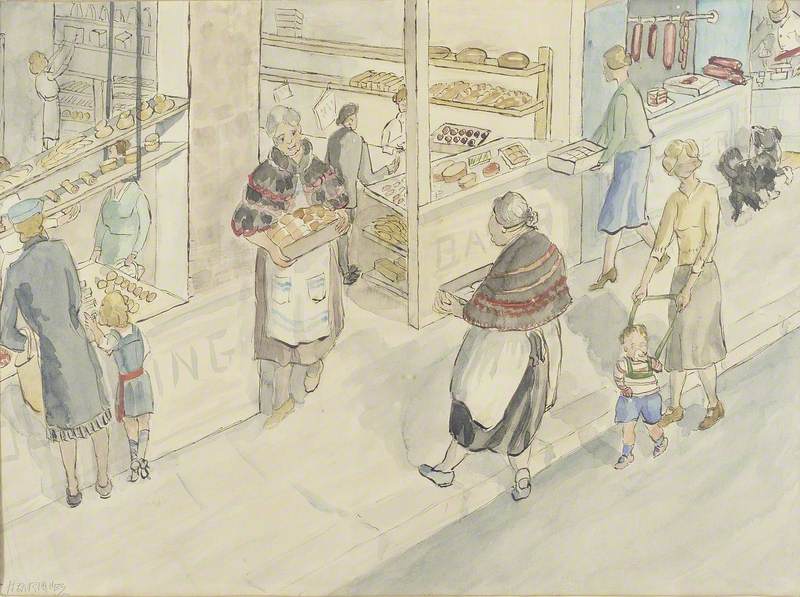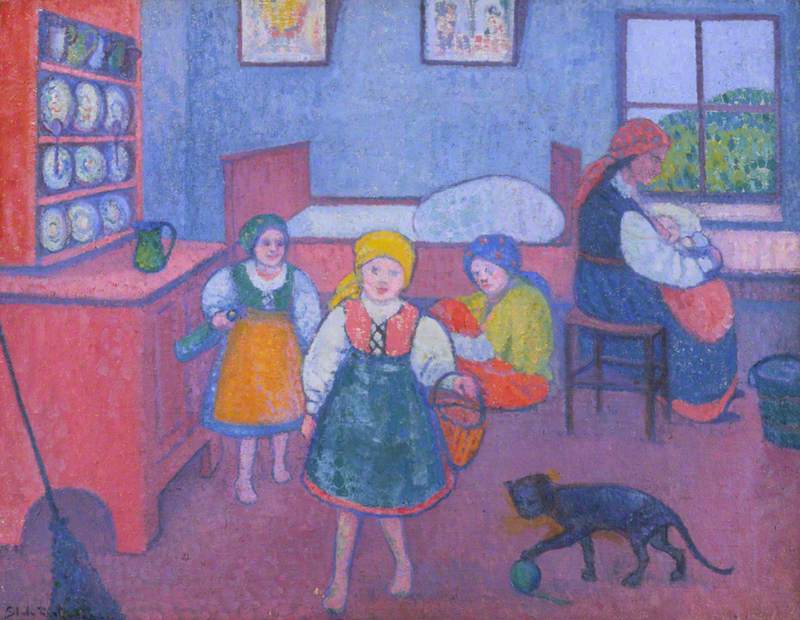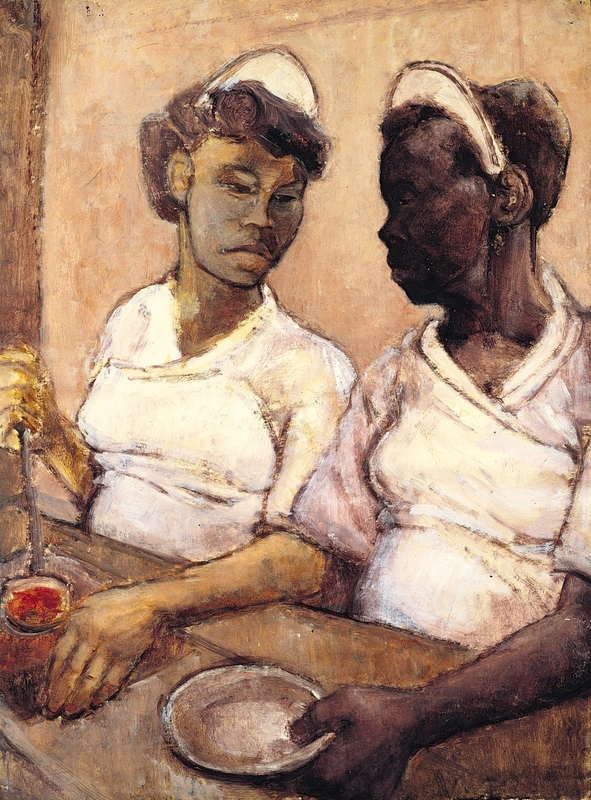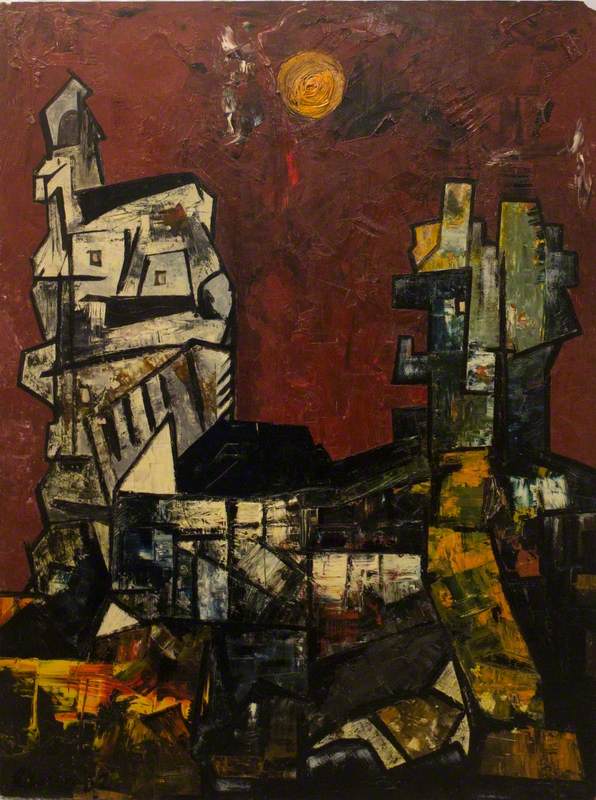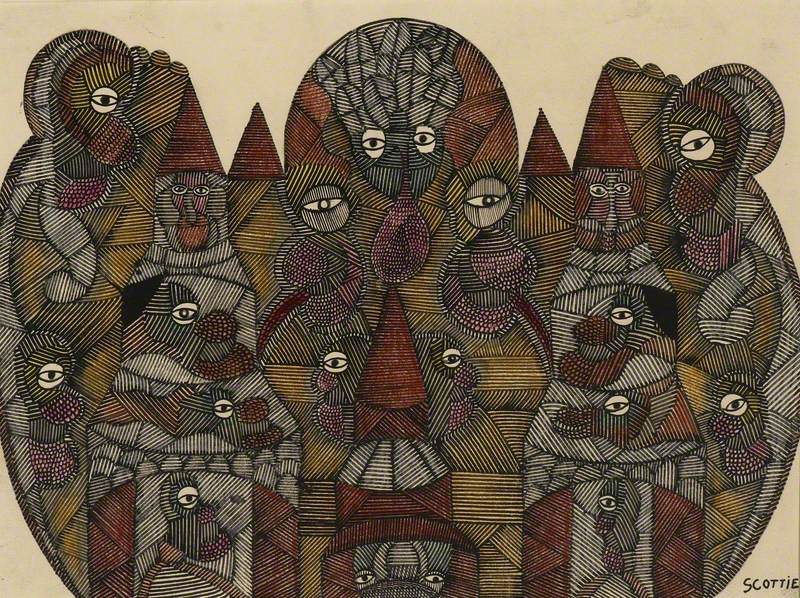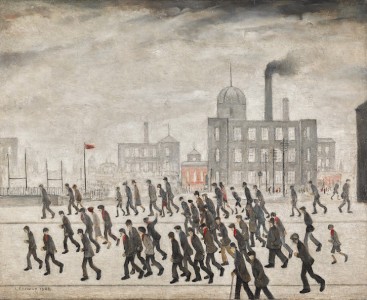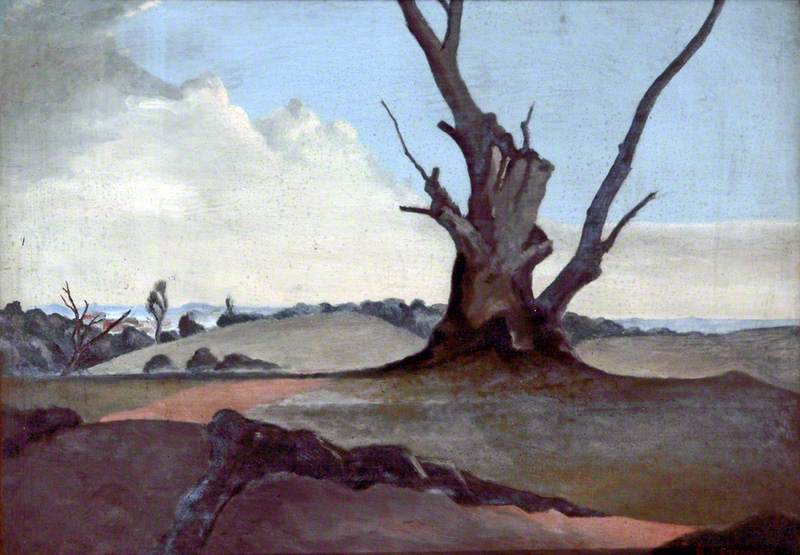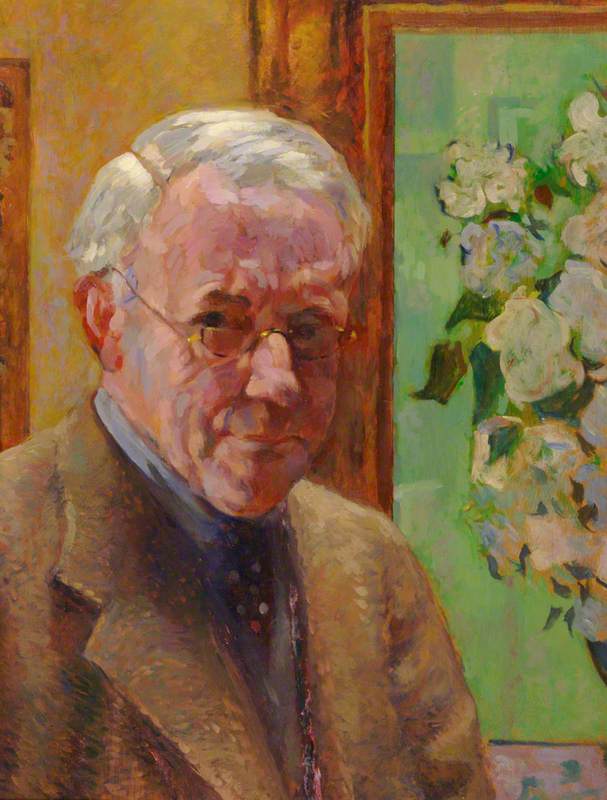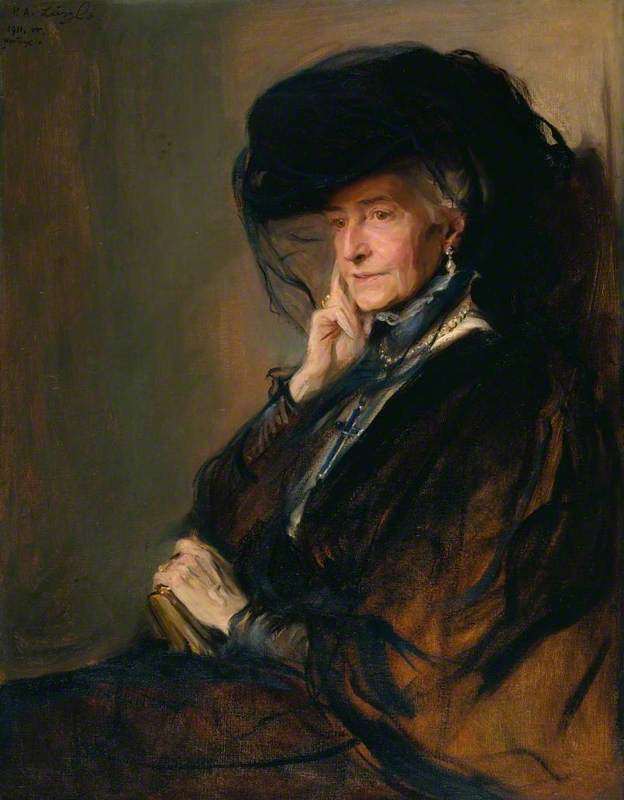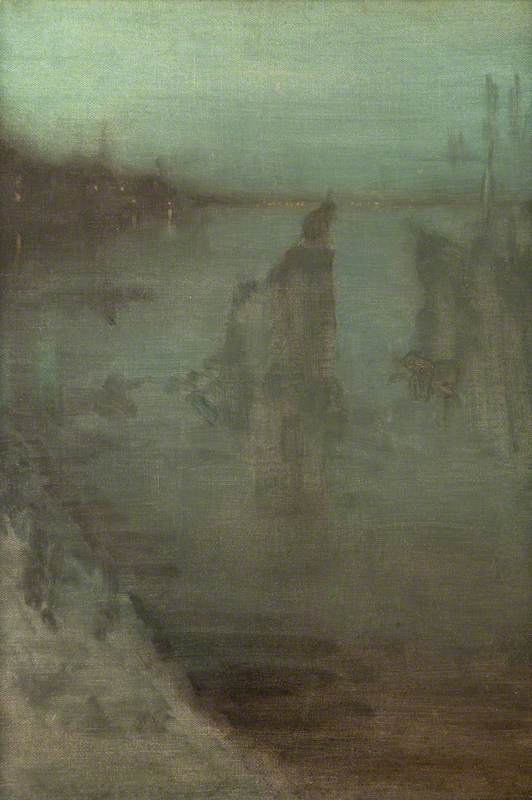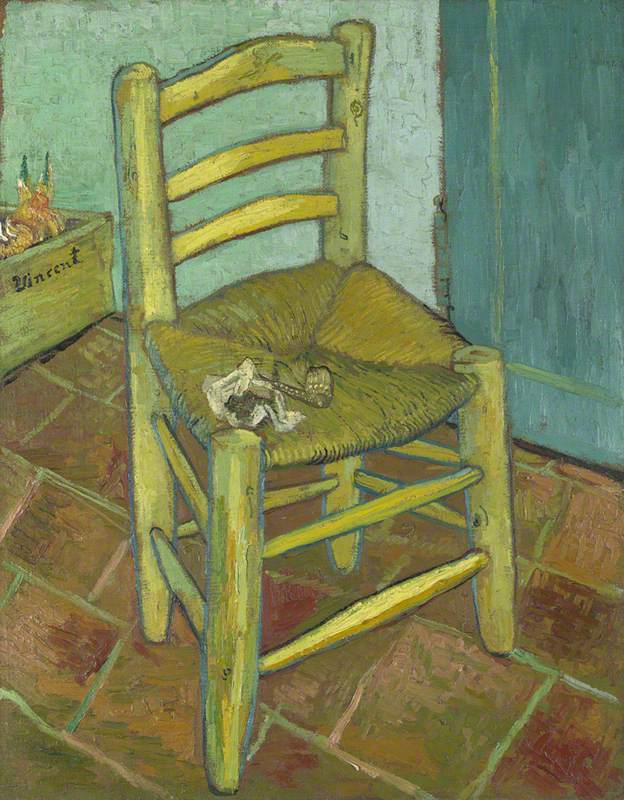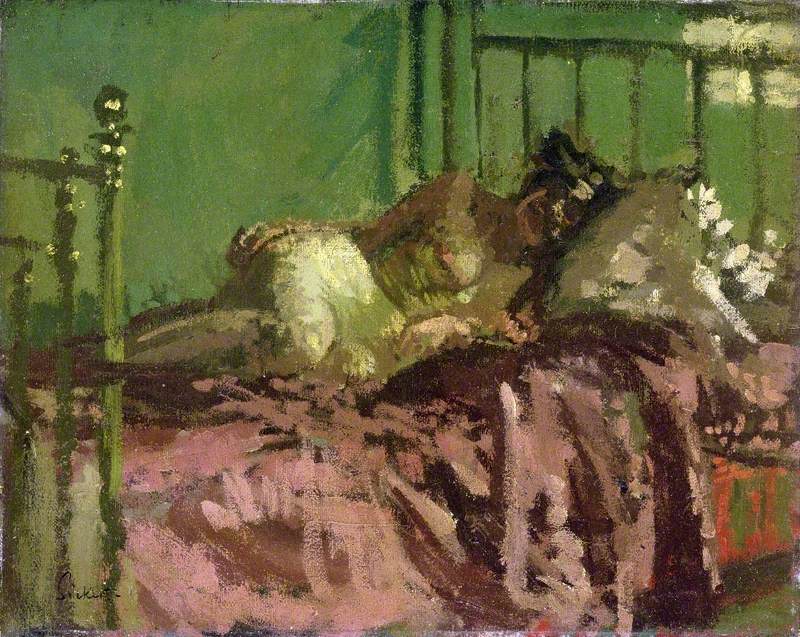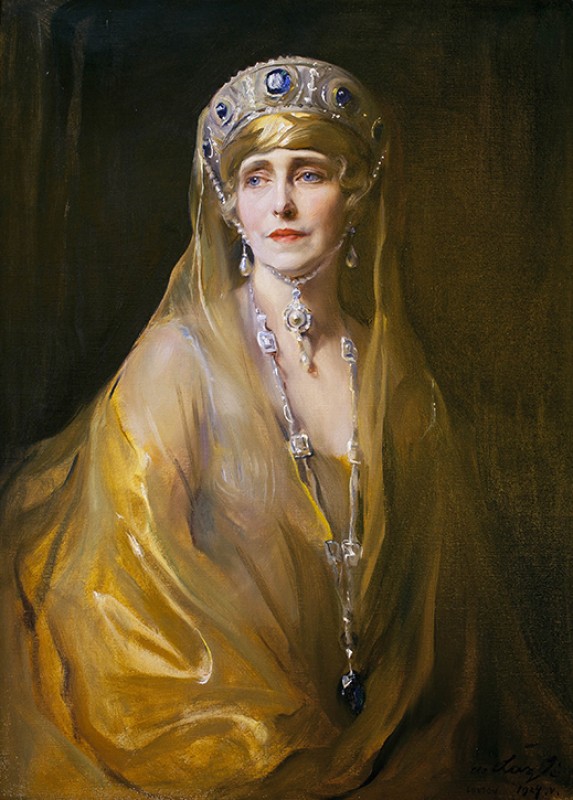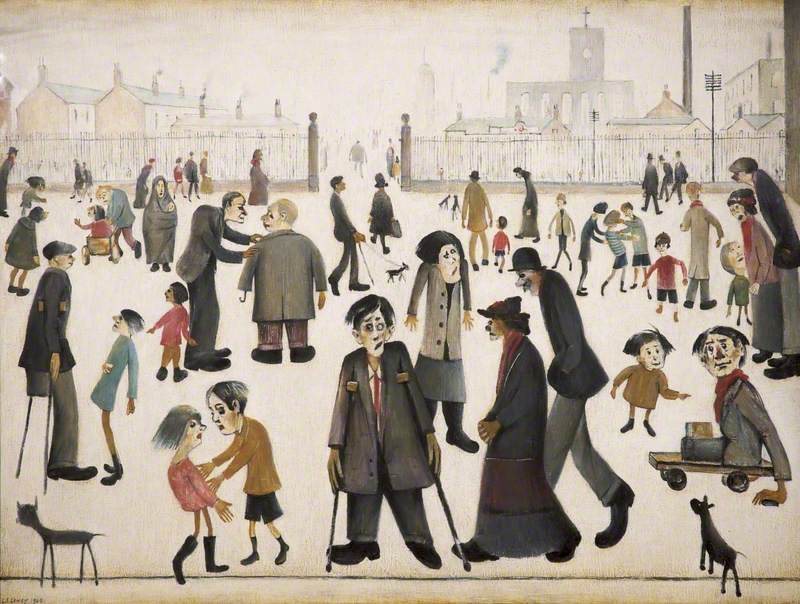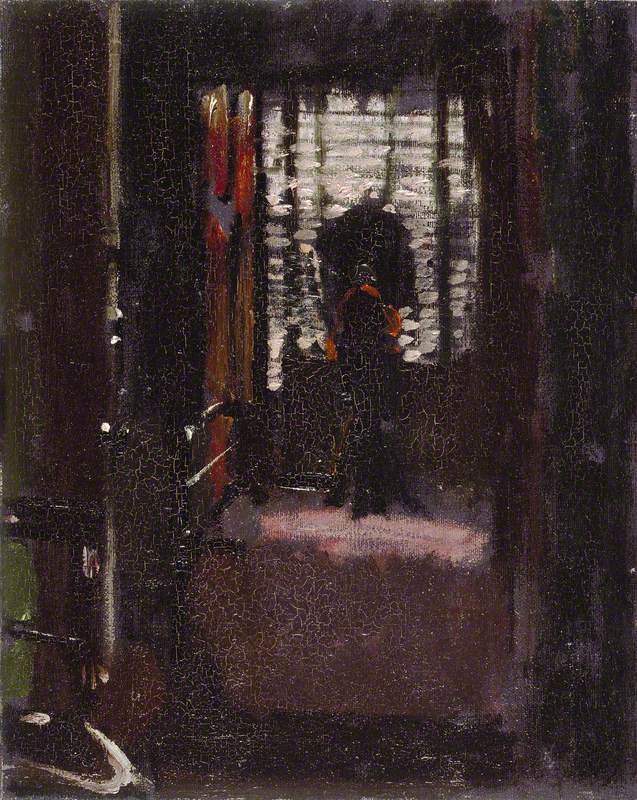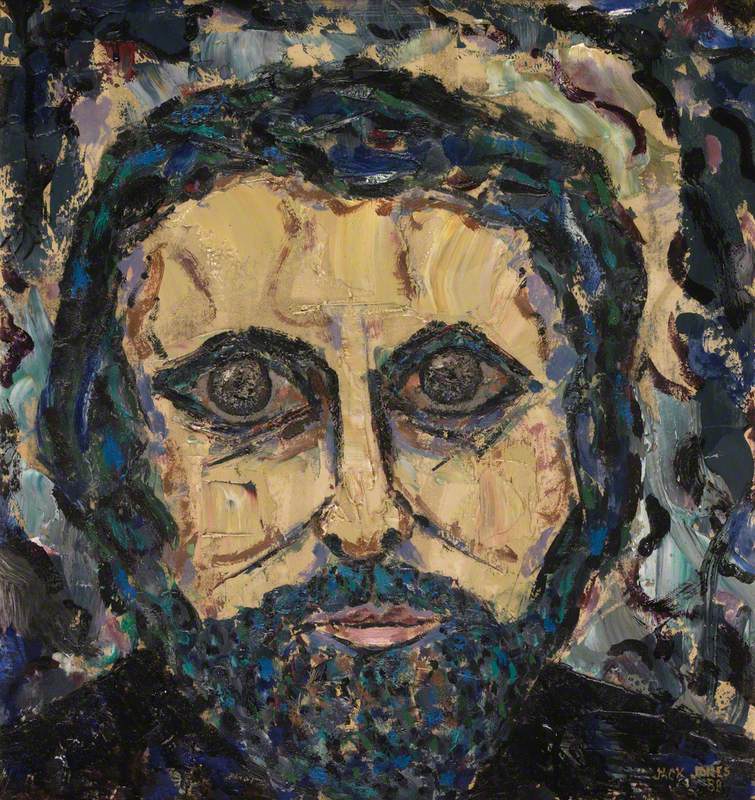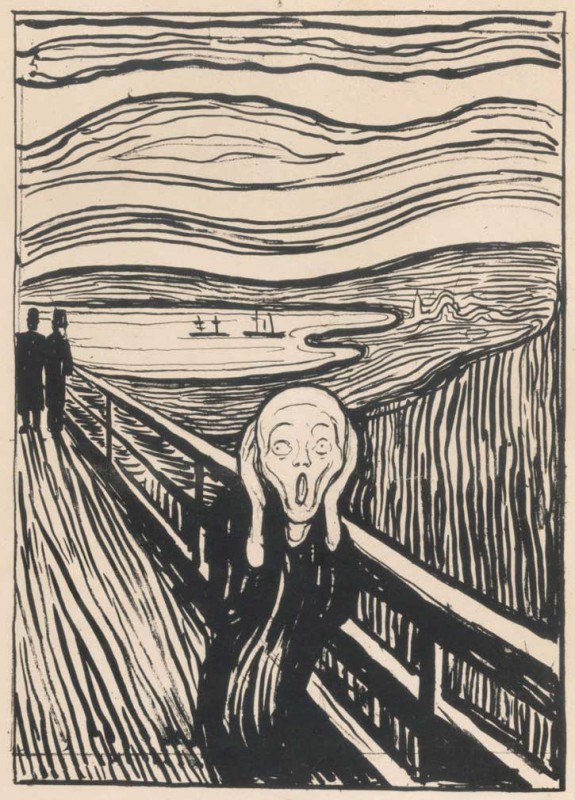John Doman Turner (1871–1938) is not widely recognised for his work and has been referred to as 'The Forgotten Camden Towner'. The deaf, Brixton-born artist worked as a stockbroker's clerk yet managed to create a significant body of unique work during his lifetime.
Mitcham Common
1912, watercolour on paper by John Doman Turner (1871–1938). Private collection 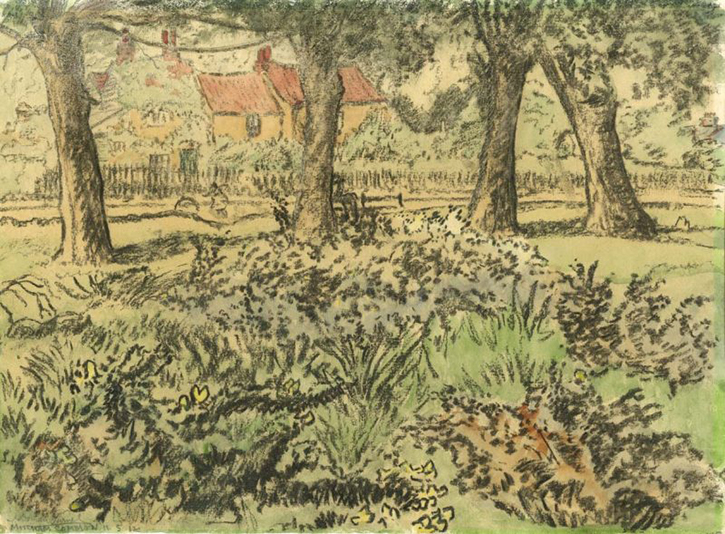
The Camden Town Group were a small group of artists that held just three exhibitions from 1911 to 1912. They aimed to reflect the realities of modern urban life in their work, and this proved to be a distinctive period in the history of British art before the First World War. In the 1979 book The Camden Town Group, Wendy Baron writes that 'only two drawings by Doman Turner are known'.
In the early 1980s, my father, James Robertson, discovered that there wasn't much information available about Turner, which triggered his curiosity and led him on a spree to find more about the artist. The artist was born in Brixton, so my father wrote to every single Turner in the Lambeth area. He discovered some early watercolours of Turner's in a Lowestoft junk shop, which later featured in a John Doman Turner exhibition at the Parkin Gallery in 1997.
This was one of the first works discovered after John Doman Turner's death. It is titled 'Montivilliers', c. 1910 - 1913. pic.twitter.com/oFBlAq2FhS
— John Doman Turner (@johndomanturner) April 12, 2022
In 2008 the Tate held an exhibition titled 'Modern Painters: The Camden Town Group' billed as 'the most comprehensive critical survey of the group's work in Britain for over 50 years. The exhibition didn't include any work from Turner.
In 2012 the Tate published an online project titled 'The Camden Town Group in Context', which brings together a wealth of materials drawn from Tate's Archive, but no biography on Turner on its artists' biography pages. Tate explains that Turner is not included in their biographies simply because they do not have any artworks by him in their main collection.
There may be many reasons why Turner's works are sadly lacking in public art collections. People do not know enough about him and do not know how to spot his works. Also, Turner may not have sold many of his works during his life. Yet many of his contemporaries considered him to have promise and talent.
After being introduced by art critic Frank Rutter, who described Turner as 'an amateur with a remarkable gift for watercolour', he received artistic training from Spencer Gore. Turner would send Gore his drawings and, in return for 5 shillings, Gore would respond with letters critiquing Turner's work.
Gore's letters and the early sketches
The Tate Archive reading room has copies of 30 to 40 letters written by Spencer Gore to John Doman Turner over five years, between 1908 and 1913, transcribed from the original Gore collection. Also included is a letter sent from Turner to Gore.
The first letter is dated 8th June 1908, sent from Garth House, Hertingfordbury. Gore explains how the tuition will work and then describes how Turner should mark his work so that it can be referred to in his critiques: 'Number each drawing so that I can refer to... Draw anything that interests you.'
John Doman Turner's sketchbooks
Looking at early sketchbook drawings of Turner's, I noticed several works have numbers associated with them, which appear to correspond with the numbers in Gore's critiques. I've been able to identify up to work No. 685, but the letters refer to work No. 900. This suggests that Turner completed over 900 works over five years.
The critiques begin
In the second letter, dated 26th June 1908, it's clear Gore was not a fan of the sketchbook that Turner initially sent. He writes: 'The first thing I should advise you do is to get a moderate-sized portfolio and draw on loose sheets of paper instead of a sketchbook... A drawing should grow like a plant, grow gradually round one point.'
No. 1 – Kingston Bridge, 6-6-8
1908, sketch by John Doman Turner (1871–1938). Private collection 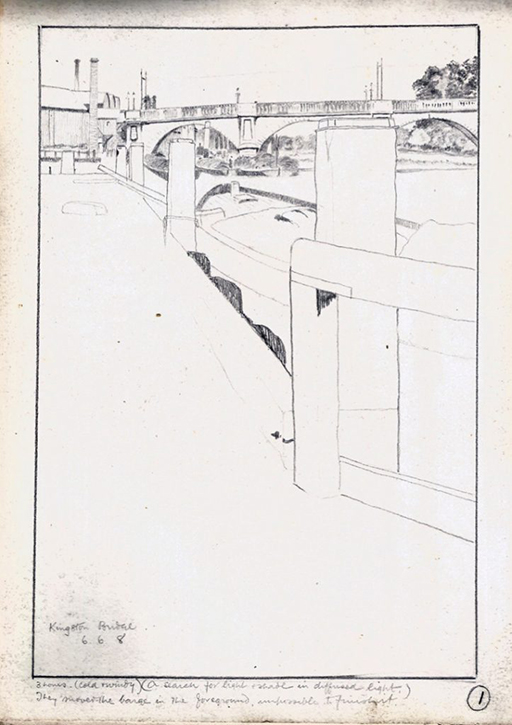
The first work to be critiqued was an unfinished study of the Kingston Bridge. Turner annotates the work, stating it took three hours to complete in cold and windy conditions. Turner also mentions in his notes that 'they moved barge in the foreground, [making it] impossible to finish'.
Gore responds: '...there is too much attempt to be neat and finished for the sake of neatness. Draw the contours of trees firmly; the first signs of appreciation of form are usually an exaggeration of it, so let yourself go – try to show exactly the line of the riverbank.'
No. 2 – Hampton Church from Mously Weir, 6-6-8
1908, sketch by John Doman Turner (1871–1938). Private collection 
On the same day, Turner sketches a view at 'Hampton Church from Mously Weir'. Gore has scribbled faintly, in pencil, on the original drawing, asking 'Why so dark?' with two small pencil arrows pointing to areas in the trees. It was common for Gore to add all sorts of advice and curses regarding their technique during this written correspondence.
Music halls and theatres
Some of Turner's most interesting drawings from his early sketches are those connected to the interiors of music halls and theatres. It is clear how influential Spencer Gore and Walter Sickert were in their teaching as these scenes were commonly depicted by other members of the Camden Town Group. It was Sickert's habit to carry a small sketchbook to the London Music Hall, to sketch the performers, the crowd and even the architectural detail of the venue.
The New Oxford Music Hall, The New Bedford
c.1908
Walter Richard Sickert (1860–1942) 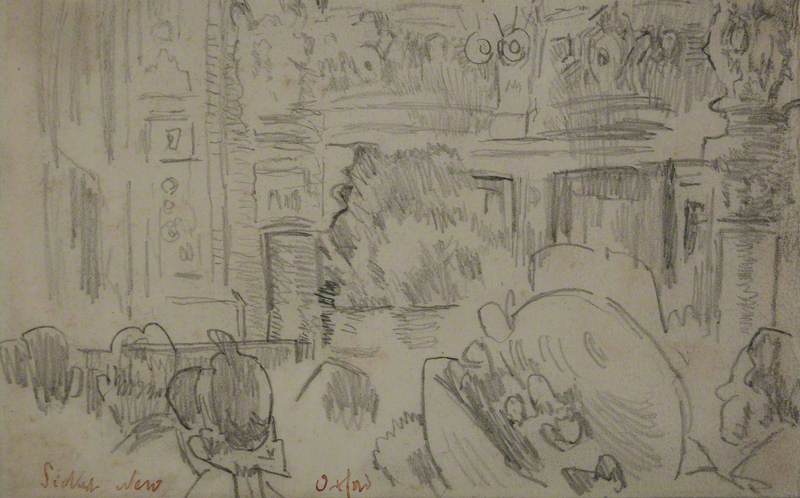
Turner did the same, drawing and painting watercolours in the Surrey Music Hall and South London Palace Music Hall.
No. 434 – Surrey Music Hall
1908, pencil on paper by John Doman Turner (1871–1938). Private collection 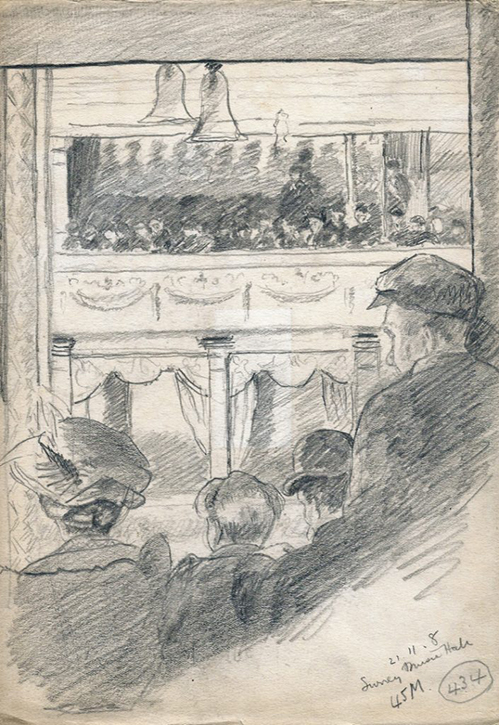
Before his marriage, Gore went to the music hall every Monday and Tuesday evening, favouring the Alhambra Theatre located on the eastern side of Leicester Square, London.
Gore wrote to Turner in late 1908 or early 1909, 'When you draw dark things, never to be too anxious to get things as dark as they are. If you wanted to bring the whole thing into tone with, for instance, the light on the stage, you could do it by passing a black over it afterwards.'
No. 439 – South London Music Hall
sketch by John Doman Turner (1871–1938). Private collection 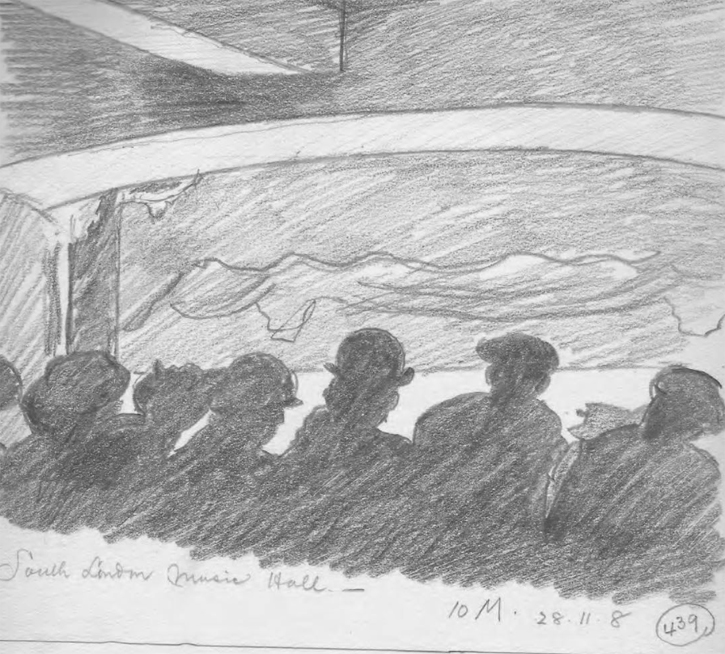
He also advised: 'Get the position which you take of the neck and draw the outline very deliberately, without a thought of whether you are drawing a hand or a leg or a face.'
No. 436–438 – South London Palace Music Hall
sketches by John Doman Turner (1871–1938). Private collection 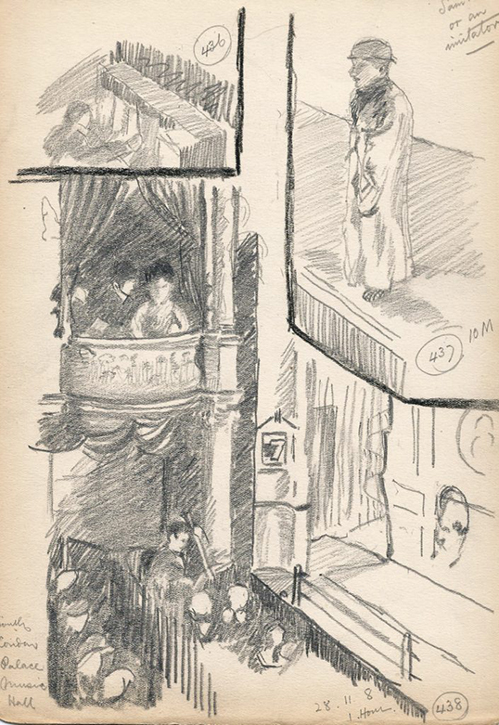
This work shows a series of three sketches, labelled No. 436, 437 and 438, including an image of Sam Mayor, who Turner describes as an imitator at the South London Palace Music Hall. These images look similar to some of Sickert's drawings.
Florence Smithers supported by Owen Dacroy and Company. 'Our Mary Jane' scene, Jack Harrison’s house
1911, watercolour & charcoal on paper by John Doman Turner (1871–1938). Private collection 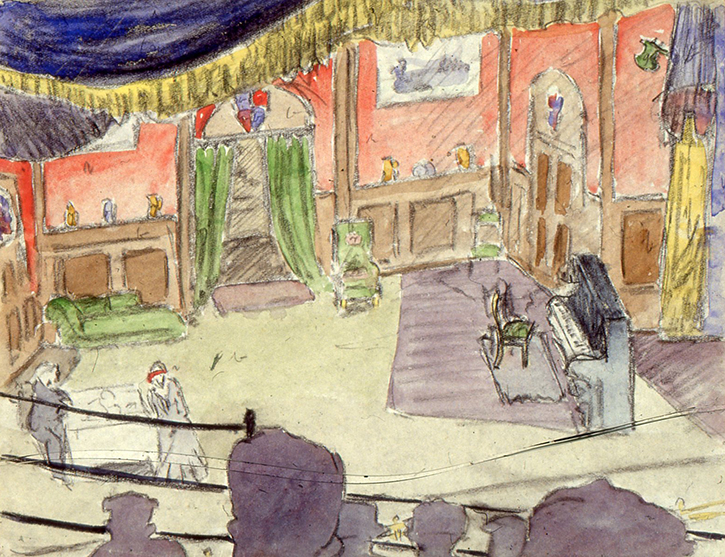
Turner later exhibited with The New English Art Club, The International Society of Sculptors, Painters & Gravers, Allied Artists' Association and the Streatham Art Society. He was a member of the London Group, but resigned as a member in 1913, possibly because he was shy and unsure of his abilities. Still, he travelled around Britain's many coastal towns, including Ilfracombe, Tenby, Eastbourne and Folkestone, sketching and painting whatever he saw.
Tuition by Walter Sickert
John Doman Turner was also tutored by Walter Sickert (1860–1942) after Gore recommended he attend his evening classes at Westminster School of Art in 1908.
The Model, Sickert's Class
1925
Harry Rutherford (1903–1985) 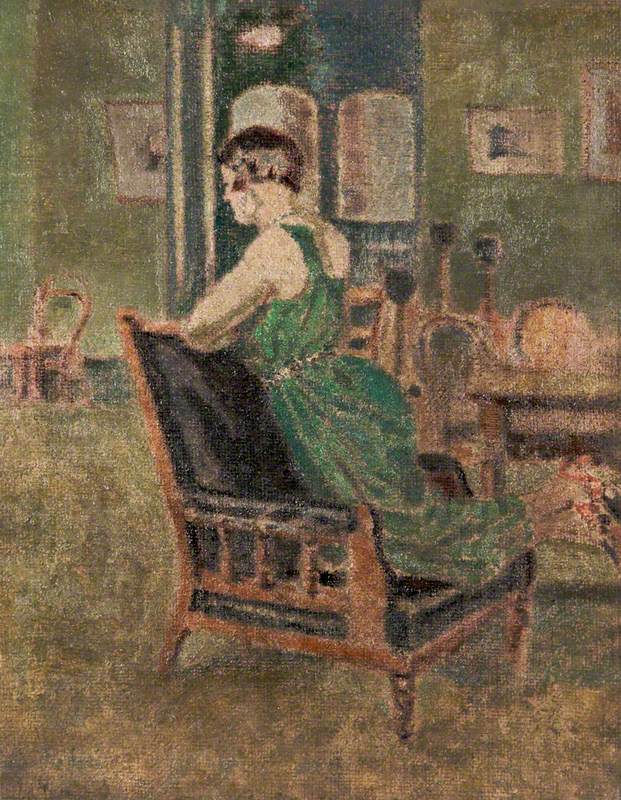
Sickert had two nights of teaching a week (Mondays and Wednesdays), taking two parallel figure classes each evening, one for women and another for men. He taught drawing and painting from life.
Teaching provided Sickert with an outlet for two of his great enthusiasms, performing to an audience and talking about the practical business of making pictures. He seldom went around each student in turn but would 'pounce' on a particular pupil and then deliver a spontaneous lecture on their work that everyone else could listen to. Drawings, he insisted, must be made to the scale of vision, advising the students to 'mark off the size of the model on their drawing boards. They then should follow three steps: 'the tentative line', 'the 'shading', and the 'definitive line'. Sickert would write these on the top of his or his students' paper.
No. 461 – Study of face and hair only
1908, sketch by John Doman Turner (1871–1938). Private collection 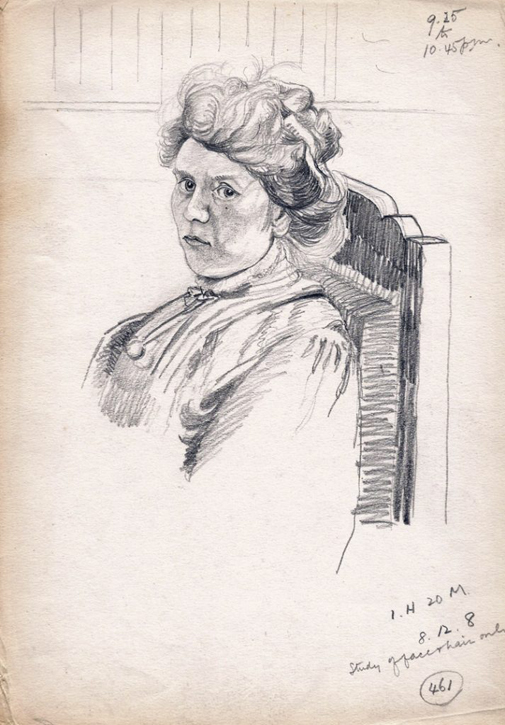
A drawing in Turner's sketchbook titled 'study of face and hair only' looks like a drawing from or inspired by one of Walter Sickert's evening classes; it is dated 8th December 1908, from 9.25 pm to 10.45 pm.
Gore was impressed with what he saw: 'That's it. Try and draw the features exactly. I think you have improved enormously.'
No. 639 – Nude study of female
1909, sketch by John Doman Turner (1871–1938). Private collection 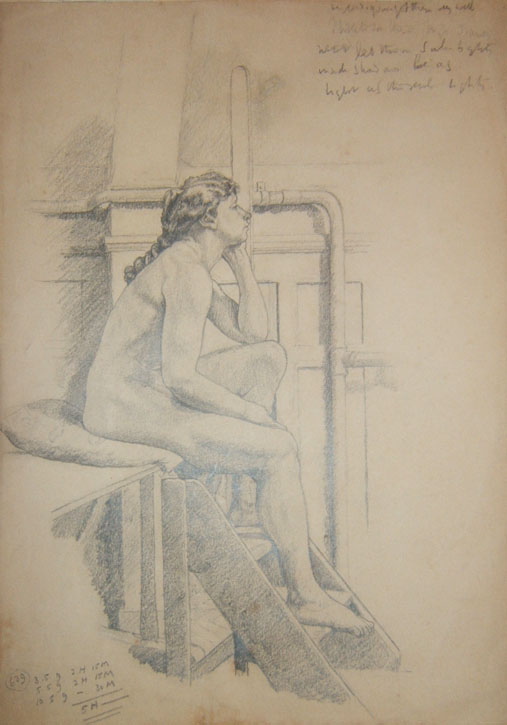
Turner's nude study of a female, No. 639, took five hours to complete in multiple evening classes in May 1909.
Gore had a great admiration for Sickert's work telling Turner, 'Nearly everything I have told you comes through Walter Sickert'. It appears Sickert was impressed with Turner's work, as Turner later went on to exhibit his work at his 'Pupils' exhibition in July 1913.
New images from John Doman Turner’s #FairgroundFrieze scroll. This appears to be one of the last scrolls he completed in 1934. It's of the circus in #Southwold, #Suffolk pic.twitter.com/FfTbM5RNd6
— John Doman Turner (@johndomanturner) February 10, 2022
As we learn more about John Doman Turner, his relationship with his teachers Spencer Gore and Walter Sickert, and discover more of his works beyond the Camden Town Group, it becomes clear that Turner was a unique artist who documented in his many paintings and sketches people at work, rest and play. He shows an interest, which is not evident with many artists, in summing up the character of Britons at that time. His lack of hearing and perhaps conversation may have encouraged him to capture his inner thoughts down on paper.
Turner's most adventurous works include four scrolls, each around 120 feet long. Some show a whole Suffolk village and others depict a whole circus and funfair parade. These scrolls have no other challengers for such an undertaking, and appear very different from other artists' work, which is generally produced with art exhibitions as a final focus. For this determination, he is one of Britain's most unique artists yet remains pretty much undiscovered. His success in galleries was mainly a pipe dream and he diverted this attention to other methods, yet his originality had few boundaries.
A year before his death, Turner wrote to James Bolivar Manson (then Director of the Tate Gallery) to reunite the letters from Gore with his early sketches:
'In addition to the letters, I have always kept a number of early sketches in a portfolio, by themselves, as Gore had scribbled – faintly, in pencil, all sorts of advice, & curses, with regard to their technique. – what shall we do about this please? If placed under the sketches in an exhibition they might be of great interest to some few people?'
It would seem that Manson did not encourage Turner in his wish that these annotated drawings of his should be exhibited, and they have since disappeared. The letters remain in the Gore family collection and have never been made public.
Turner died from bronchopneumonia at his Streatham home on 3rd January 1938.
Stephen Robertson, art researcher
For more about the artist, visit Stephen and his father James' website johndomanturner.com
